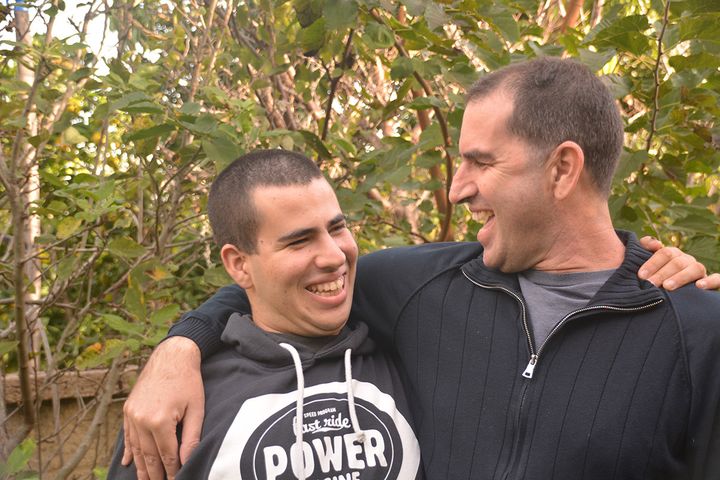
AngelSense Co-Founder, Doron Sommer and his son Itamar.
Many schools have launched bullying awareness programs, with regularly held classes on the topic, and initiatives such as National Bullying Month held every year in October.
While national attention on the bullying problem is always encouraging, one community in particular struggles with the issue in ways not felt by mainstream kids. I’m talking of course about kids with special needs, or kids with ASD (Autism Spectrum Disorder).
Bullying can negatively affect all children in potentially far-reaching ways, like long term self-esteem issues, insecurity, and even prolonged behavioral issues. The problem is that children with special needs are even more likely to be targets of bullying, and in many cases aren’t equipped with the communication tools to respond to it, process it, or even enlist the help of parents or educators.
One telling study found that 63 percent of bullied school-going children are children with special needs. Another found that special children were nearly five times more likely to be bullied than their peers.
What makes kids with special needs more vulnerable?
There are a number of reasons for this sad fact. Firstly, children with special needs tend to have unique or different ways of communicating, using gestures or words that others find inappropriate, odd, or threatening. They also struggle with social cues and non-verbal communication, making socializing even more of a challenge and opening them up to mockery by their peers.
In addition, kids with special needs and ASD tend to be loners, which draws unwanted attention to them and makes them especially vulnerable targets. Kids who are different or keep to themselves often become excluded from the rest of the group, or worse, ganged up on.
The biggest challenge for parents desperate to keep their children with special need safe is the fact that verbal communication can often be severely limited or non-existent between child and parent – creating the awful possibility that your child is being picked on regularly, but doesn’t even have the words to tell anyone about it.
How to pick up on signs of bullying?
There are some telltale signs which could indicate that your child is being bullied. The general rule is to be alert for any sudden change in behavior. This could include a noticeable increase in anxiety, trouble sleeping, and more frequent and intense meltdowns than usual. Sometimes your child’s angst could even be reflected in emulating the abusive behavior at home by bullying his or her siblings. Obviously, physical signs of struggle or injury are also something to be on the alert for.
Another possible sign of trouble is sudden reluctance to go to school for no apparent reason. This could be accompanied by general disinterest in favorite activities and hobbies, and a sense of listlessness, depression, or withdrawal. There may also be a noticeable increase in obsessive behavior.
If your child displays any of the signs above, there are devices you can use to listen-in during certain situations. For example, AngelSense not only lets parents listen to their children’s surroundings, but allows them to track where they are to check whether bullying is in fact occurring. This is especially effective if you suspect foul play at certain times of your child’s day, for instance, on the bus or during recess.
What can you do to protect your child?
Sometimes kids with special needs need to be instructed on the finer points of identifying friendly behavior versus hostile behavior. Children on the spectrum often can’t intuitively tell the difference between the two, and have to be told how to classify each. Some children may be reluctant to verbally discuss bullying, and what they’re thinking and feeling in general. Having them draw a visual representation of the abuse can be highly cathartic and therapeutic; in addition, it can help you understand what they’re going through.
As a next step, try teaching your child how to respond to bullying. You could, for example, teach him or her to walk away and head for a teacher’s office. Another option is to encourage your child to write about or draw any incidents that make them feel uncomfortable. However you choose to teach your child to cope with this abusive behavior, it’s a good idea to write out an action plan or social story in your child’s school diary.
A playgroup is an effective way for a special child to make friends. Be sure to include as many children from your child’s school as possible. You can also check if your child’s school already has existing playgroups for children that struggle with making new friends. This will not only help your child deal with bullying, but will give them invaluable social skills that will benefit them later in life.
As a society committed to the prevention of social abuses, we need to ensure inclusion of the most vulnerable of bullying victims: those who often don’t have a voice to defend themselves or even describe to parents or caregivers what they are experiencing at the hands of their peers.
The National Bullying Prevention Month initiative has helped special and traditional-needs families alike open that conversation and spread awareness and education on bullying in general. As parents of children with special needs, it’s up to us to make sure that these and other initiatives like it positively affect those who need them the most.